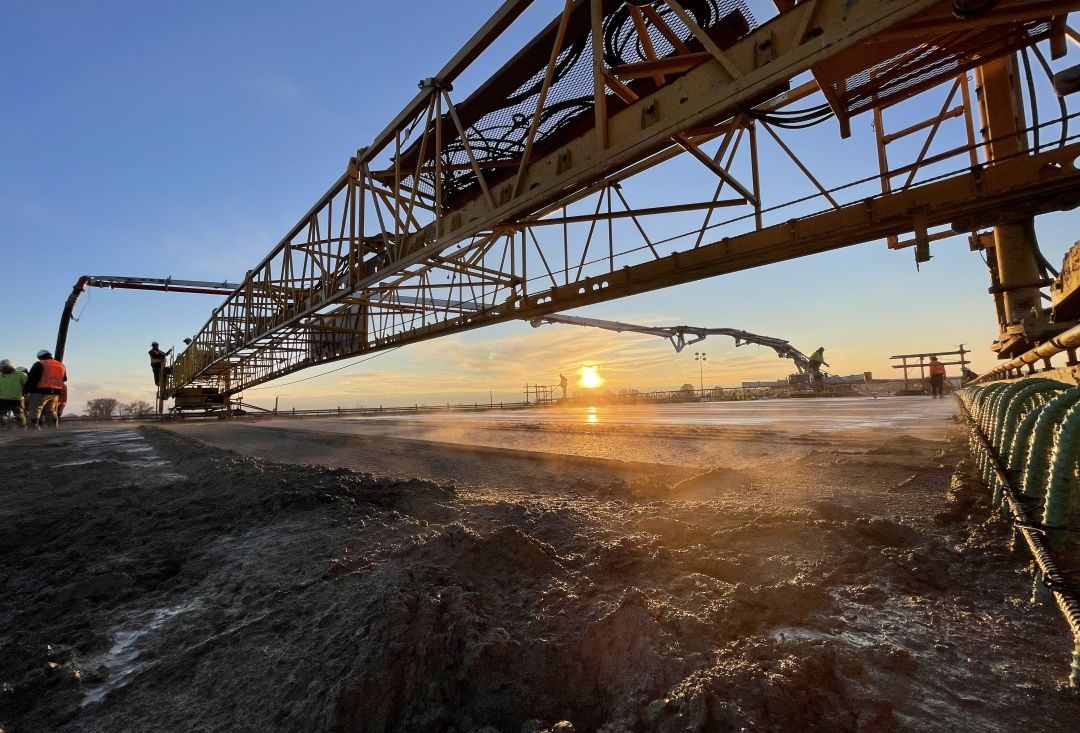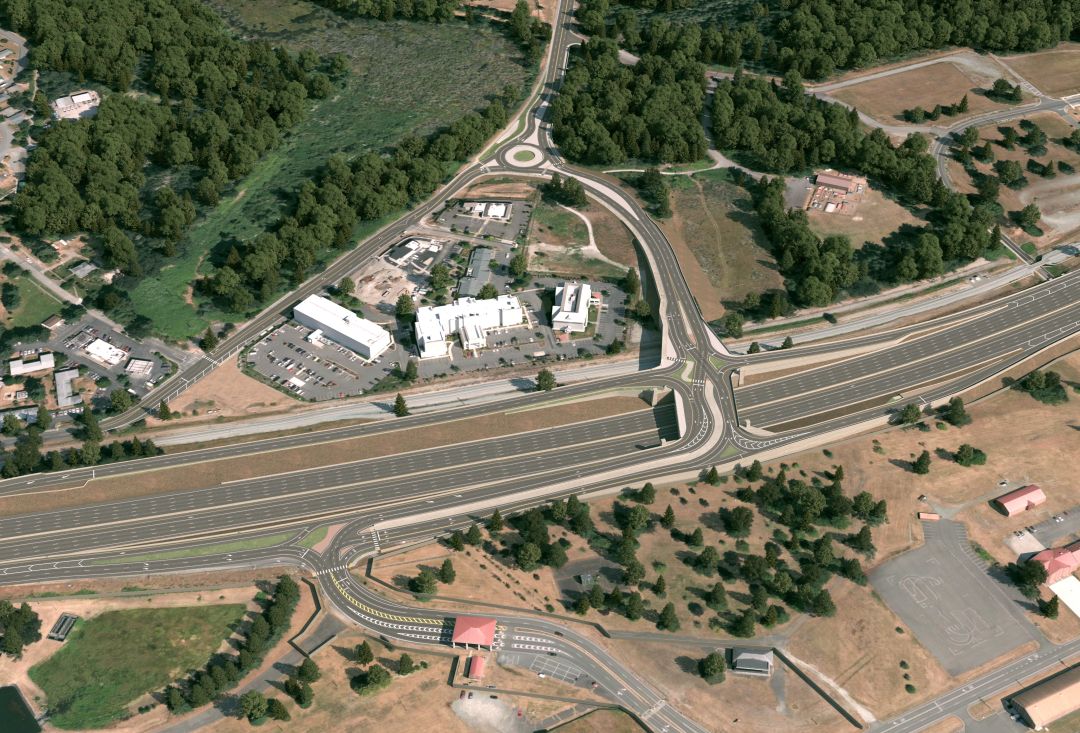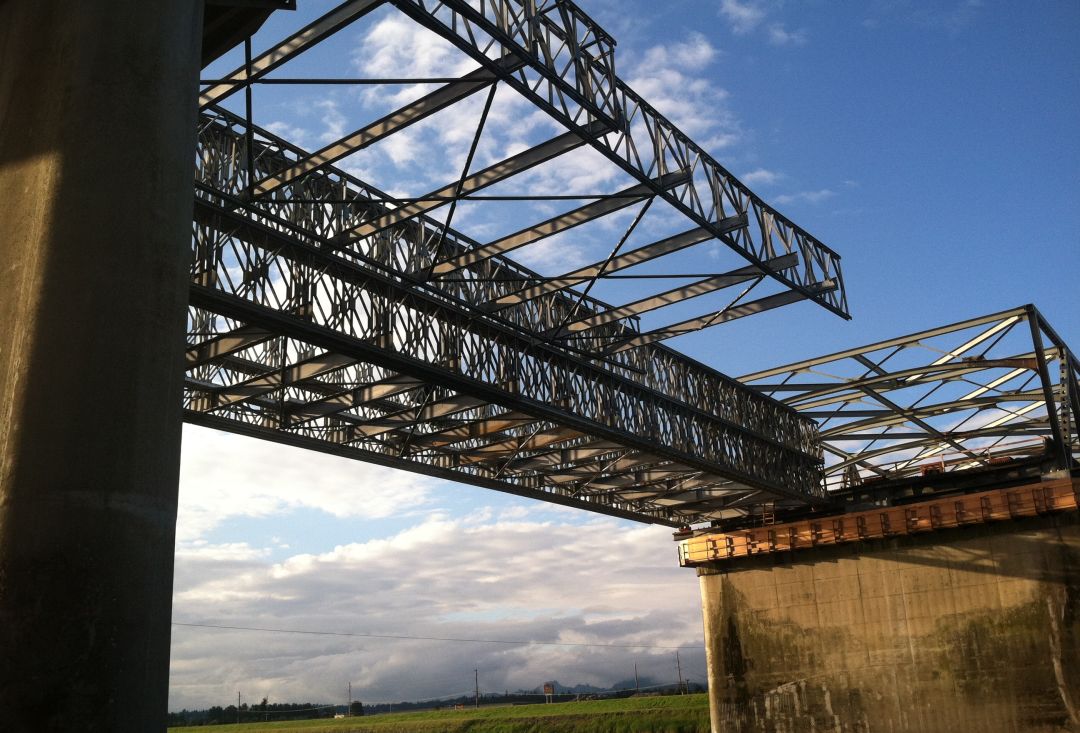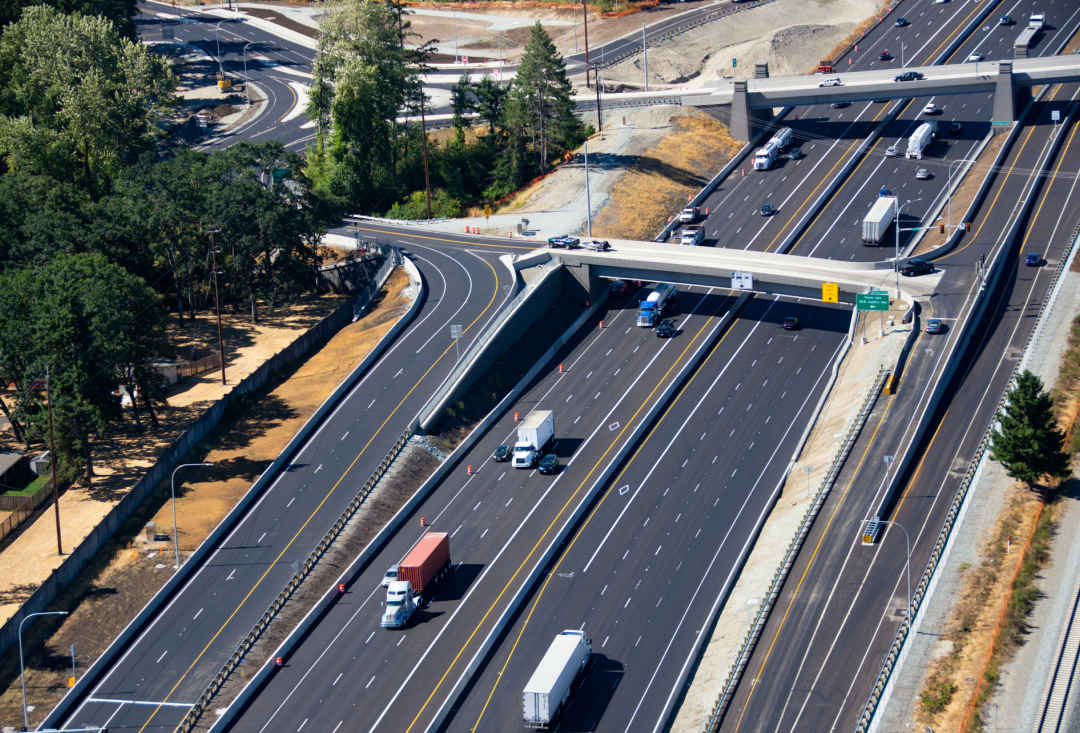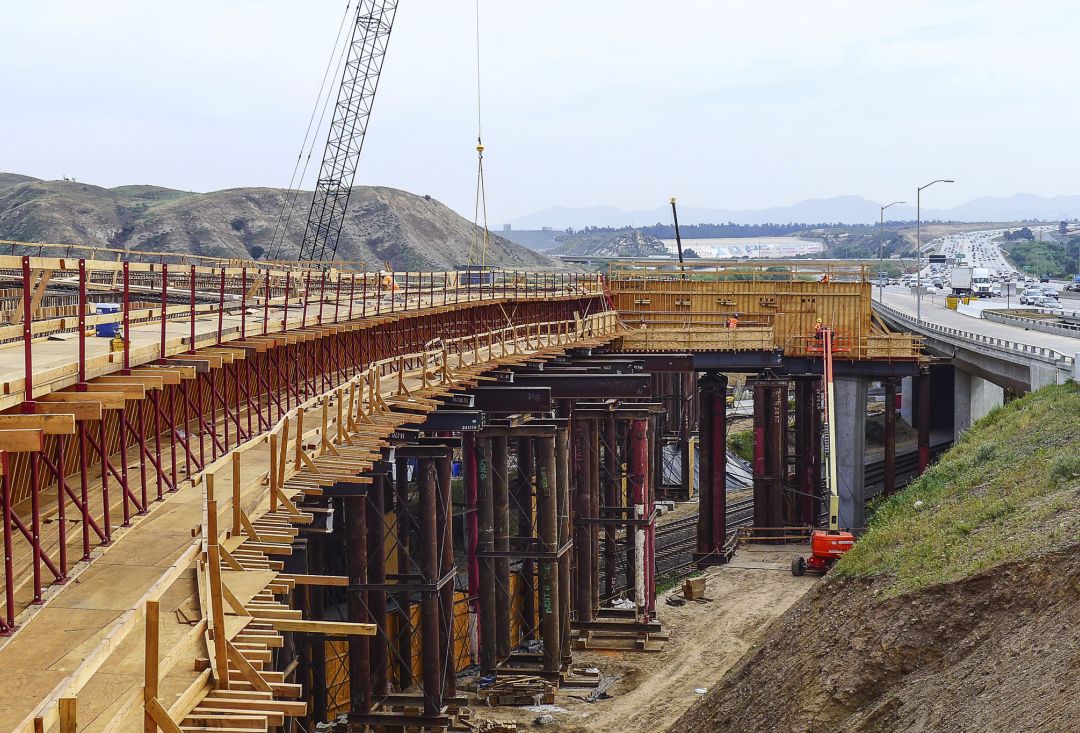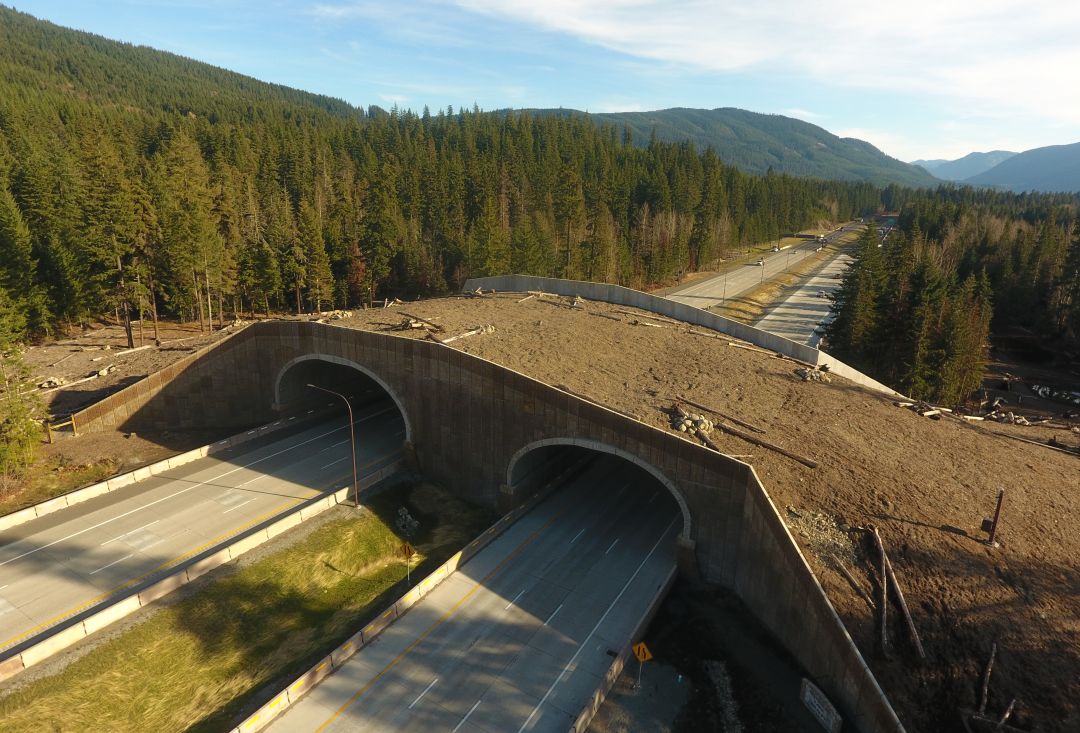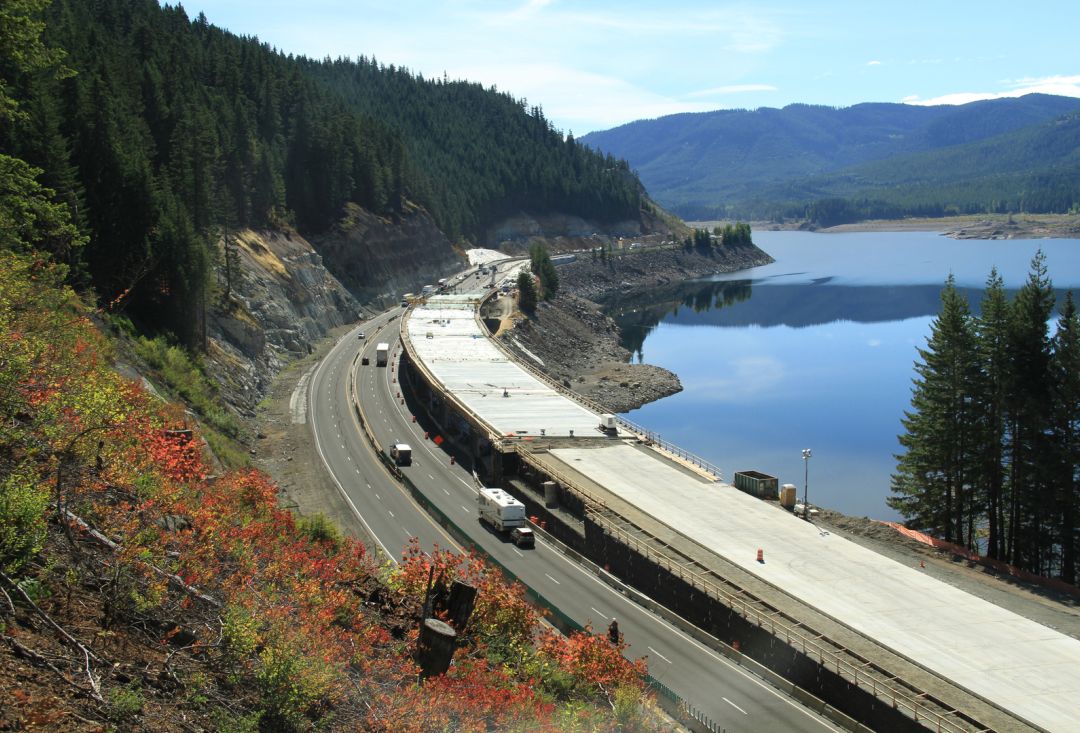Client
Completion Date
Designer
Location
Delivery Method
Division
Contract Value
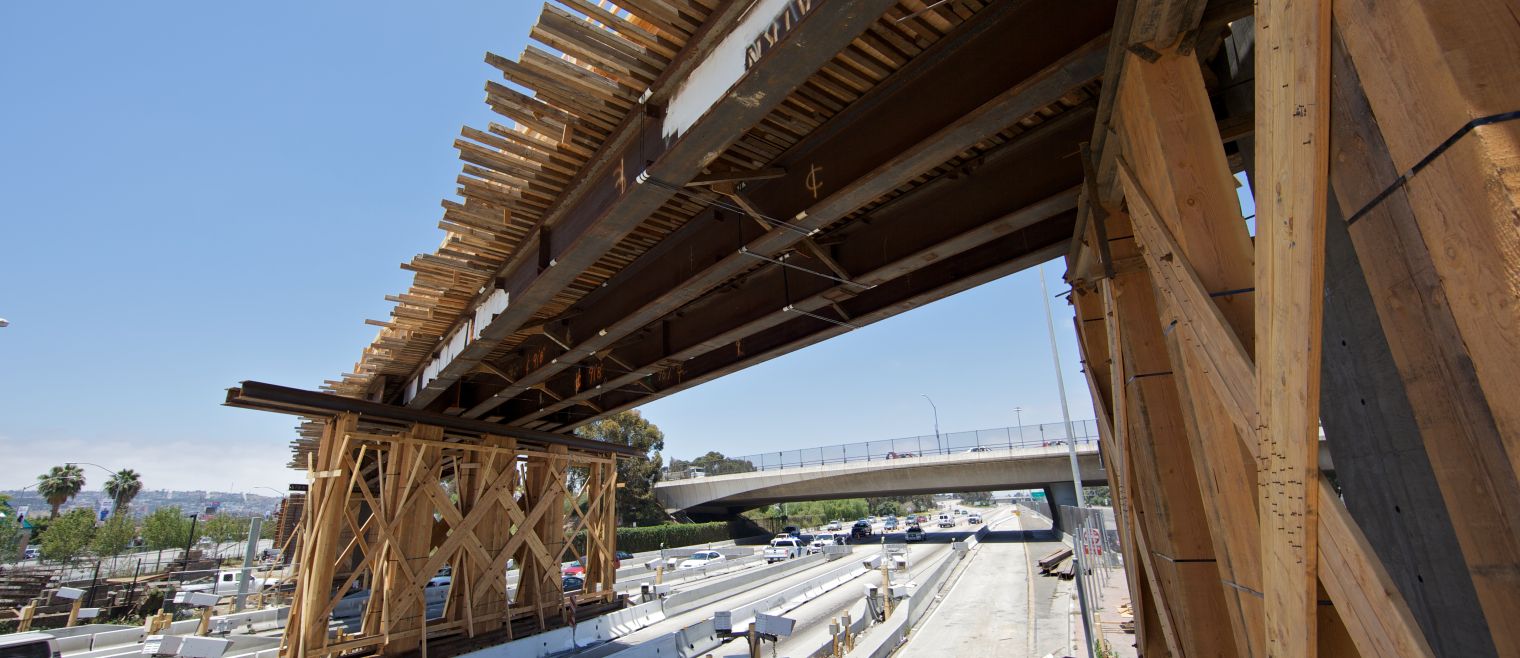
The San Ysidro Land Port of Entry (LPOE) East/West Pedestrian Bridge is 806 feet long and spans across 30 lanes of I-5—as well as several US Customs and Border Protection facilities—at the USA/Mexico border. The port of entry facility is one of the world's busiest, processing more than 25,000 pedestrians and 50,000 vehicles a day. For this project Atkinson supported parent company Clark Construction, which allowed the project team to combine Clark’s expertise in working with government entities with Atkinson’s expertise in bridges and traffic control.
The bridge connects Camino de la Plaza east of I-5 with East San Ysidro Boulevard on the west side of the highway. The cast-in-place bridge includes nine piers with architectural exposed concrete, 2,400 feet of stainless-steel mesh panel handrails, two cast-in-place elevated approach ramps, two structural steel approach bridges, and an exposed soffit concrete stair. Despite minimal laydown areas and site logistics divided by the 30-lane highway, vehicle traffic was rarely impacted and ongoing customs and border patrol operations were never interrupted during construction.
The project location required coordination with several government entities, including US General Services Administration (GSA), US Customs Border Patrol (CPB), City of San Diego, Caltrans, and Metropolitan Transportation Services) to ensure we obtained necessary approvals in a timely manner.
Each of the nine structural support piers required multiple precast concrete pilings and—due to the proximity of traffic lanes—installation logistics were challenging. To install the pilings, we drove the pile-driver across I-5 lanes and transported the piles on I-5 during off-peak hours to position both equipment and materials. Furthermore, pile cap excavations had to be shored adjacent to the active freeway, pier walls were formed and poured, and the main span of the bridge was constructed on falsework erected over the highway. Multiple bridge types and security threats—able to shut the project down without notice—added to the complexity of the project.
